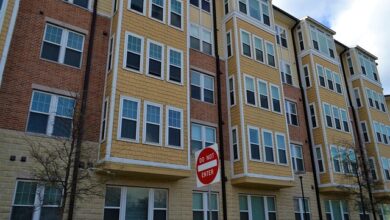Homeowners Insurance for High-Risk Areas in Canada: What You Need to Know

Introduction: Protecting Your Home in High-Risk Zones
Owning a home is one of the most significant investments you’ll make in your lifetime. However, if your property is located in a high-risk area—whether due to natural disasters, crime rates, or environmental factors—securing adequate homeowners insurance can be both challenging and expensive. In Canada, where extreme weather events like floods, wildfires, and severe storms are becoming increasingly common, understanding how to navigate the complexities of homeowners insurance is essential.
This guide will explore the intricacies of homeowners insurance for high-risk areas in Canada, including coverage options, cost considerations, risk mitigation strategies, and tips for finding affordable policies despite elevated premiums.
What Makes an Area “High-Risk”?
Insurance companies classify certain geographic regions as “high-risk” based on various factors that increase the likelihood of damage or loss. Common characteristics of high-risk areas include:
- Natural Disasters:
- Flood Zones: Areas near rivers, lakes, or coastal regions prone to flooding.
- Wildfire-Prone Regions: Particularly in Western Canada (e.g., British Columbia, Alberta) where dry conditions fuel forest fires.
- Severe Weather: Locations susceptible to tornadoes, hurricanes, or heavy snowfall.
- Crime Rates: Neighborhoods with higher incidences of theft, vandalism, or break-ins may see increased premiums.
- Environmental Hazards: Proximity to industrial sites, landfills, or areas with poor soil stability (e.g., sinkholes).
- Climate Change Impact: Rising global temperatures have exacerbated risks such as flooding and wildfires, making previously safe areas more vulnerable.
Understanding whether your home falls into a high-risk category is crucial for assessing insurance needs and costs.
Types of Coverage for High-Risk Homes
While standard homeowners insurance typically covers perils like fire, theft, and wind damage, high-risk areas often require specialized policies or endorsements to address specific threats. Below are the most common types of coverage available:
1. Overland Flood Insurance
- Why It Matters: Standard homeowners policies exclude overland flooding (water entering the home from rivers, lakes, or heavy rainfall). With Canada experiencing record-breaking floods in recent years, this coverage has become critical.
- Availability: Introduced in 2015, overland flood insurance is now offered by many insurers but comes at a premium, especially in designated flood zones.
- Cost Considerations: Premiums vary widely depending on proximity to water bodies, elevation, and historical flood data.
2. Wildfire Insurance
- Why It Matters: Wildfires pose a growing threat, particularly in Western provinces. While fire damage is usually covered under standard policies, additional endorsements may be needed for smoke or ash-related damages.
- Mitigation Discounts: Insurers may offer reduced rates if homeowners implement wildfire-resistant measures, such as clearing vegetation around the property or using fire-retardant roofing materials.
3. Earthquake Insurance
- Why It Matters: Earthquakes are not covered under standard policies, yet they remain a risk in regions like British Columbia and parts of Quebec.
- Cost Considerations: Earthquake insurance tends to be expensive due to the catastrophic nature of potential claims. Deductibles are also high, often ranging from 5% to 20% of the insured amount.
4. Sewer Backup Coverage
- Why It Matters: Heavy rains and melting snow can overwhelm municipal drainage systems, leading to sewer backups—a common issue in urban areas.
- Availability: Many insurers offer sewer backup endorsements, which are highly recommended for homes in low-lying or flood-prone neighborhoods.
5. Comprehensive Crime Protection
- Why It Matters: High-crime areas necessitate robust coverage against theft, vandalism, and malicious damage.
- Additional Features: Some policies include identity theft protection or coverage for stolen valuables stored off-premises.
Factors That Influence Insurance Costs in High-Risk Areas
Several variables determine how much homeowners in high-risk areas pay for insurance:
- Location: Properties in floodplains, wildfire zones, or earthquake-prone regions face significantly higher premiums.
- Construction Materials: Homes built with fire-resistant materials (e.g., brick, concrete) or equipped with storm shutters may qualify for discounts.
- Proximity to Emergency Services: Access to fire stations, hospitals, and police departments can lower costs.
- Historical Claims Data: If your neighborhood has a history of frequent claims related to specific perils, expect higher rates.
- Deductibles and Limits: Choosing higher deductibles or lower coverage limits can reduce premiums but increases out-of-pocket expenses during a claim.
Strategies for Reducing Insurance Costs
While living in a high-risk area inevitably raises insurance costs, there are ways to minimize expenses without compromising coverage:
- Risk Mitigation Measures:
- Install sump pumps and backwater valves to prevent sewer backups.
- Use fire-resistant landscaping and building materials to reduce wildfire risk.
- Elevate electrical systems and appliances in flood-prone homes.
- Bundling Policies: Combining homeowners insurance with auto or other personal lines policies from the same provider can yield significant discounts.
- Shop Around: Compare quotes from multiple insurers, including smaller regional companies that might offer competitive rates.
- Increase Deductibles: Opting for a higher deductible lowers monthly premiums but requires setting aside savings for emergencies.
- Leverage Government Programs: Some provinces partner with insurers to provide subsidized coverage for specific perils, such as overland flooding.
- Maintain Good Credit: In provinces where credit scores influence premiums, maintaining a strong score can lead to savings.
Common Misconceptions About Homeowners Insurance in High-Risk Areas
Misinformation can complicate efforts to secure appropriate coverage. Let’s clarify some common myths:
- Myth #1: All Perils Are Covered Under Standard Policies
- Reality: Standard policies exclude perils like floods, earthquakes, and sewer backups unless explicitly added via endorsements.
- Myth #2: Living in a High-Risk Area Means Unaffordable Insurance
- Reality: While premiums are higher, implementing risk-reduction measures and shopping strategically can make coverage manageable.
- Myth #3: Government Assistance Will Cover Disaster Losses
- Reality: Federal disaster relief programs often provide minimal aid and come with strict eligibility requirements. Private insurance remains the primary safeguard.
- Myth #4: Older Homes Are Automatically More Expensive to Insure
- Reality: Age alone isn’t a determining factor; structural integrity, updates, and safety features matter more.
Final Thoughts: Preparing for Peace of Mind
Living in a high-risk area doesn’t mean sacrificing financial security or peace of mind. By understanding the unique challenges posed by your location and taking proactive steps to mitigate risks, you can find a homeowners insurance policy that balances affordability with comprehensive protection.
Remember, investing in the right insurance isn’t just about safeguarding your property—it’s about ensuring your family’s future remains stable, no matter what Mother Nature throws your way. Whether you’re reinforcing your home against wildfires, installing flood defenses, or exploring tailored endorsements, every effort counts toward resilience.
If you’re ready to review your current policy or shop for new coverage, consult with an experienced broker who understands the nuances of insuring high-risk properties. Together, you can create a strategy that keeps your home—and your finances—secure.




